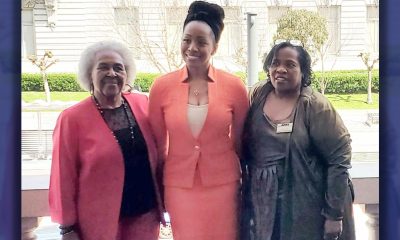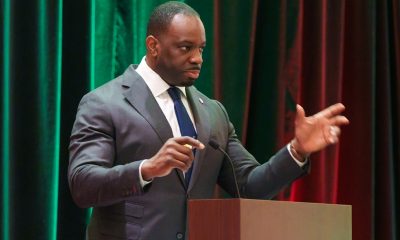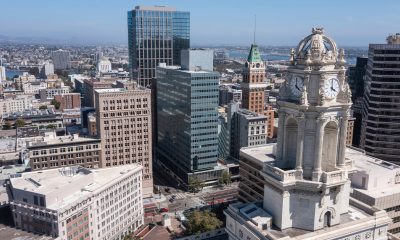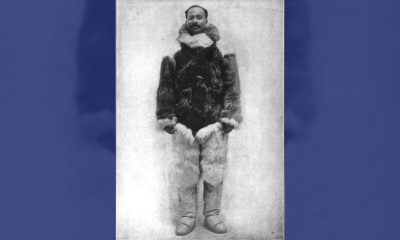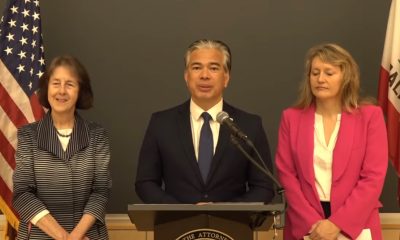#NNPA BlackPress
COMMENTARY: How Strong is Our Economy?
NNPA NEWSWIRE — “How strong is our economy? It is undoubtedly stronger than it was a year ago, but it’s not as strong as some claim that it is. Labor market weaknesses and inequality are of particular concern to African Americans. Companies are hiring, but they aren’t hiring enough African Americans to close the unemployment rate gap.”
By Julianne Malveaux, NNPA Newswire Contributor
The April unemployment rate, at 3.6 percent, is at its lowest rate since December 1969. Payroll employment increased by more than 250,000, outperforming expectations and reversing the disappointing job creation numbers of last month. First quarter growth was reported at 3.2 percent, a robust figure that exceeds estimates, earlier this year, that growth would be somewhat slower. This perhaps gives the man who lives in the House that Enslaved People Built something to crow about since he so enjoys crowing. But many economists are waiting for the other shoe to drop, having workshops and forums about the coming recession. And as positive as the numbers seem, there are always gaps and inequities reflected in the fine print.
Take the unemployment rate. It declined overall, and for adult men and women, whites, Asians and Hispanics. At the same time, the unemployment rates for African Americans and teenagers were unchanged. The Black unemployment rate, at 6.7 percent, is more than twice the white rate of 3.1 percent. This ratio of 2.16 percent is higher than the usual 2:1 unemployment rate, widening inequality. Should African Americans really celebrate a strong labor market when so many are sidelined from it? Despite claims of economic improvement and an improvement in some of the indicators, the fact that others remain stagnant is telling. For example, 1.2 million people have been out of work for more than half a year. They represent one in five of the unemployed. The number may seem small, but the persistence of unemployment for some individuals should be troubling for those who make public policy.
The number of people who are considered “marginally attached” to the labor force, which means that they’d work if they could find work, but they’ve ceased to look, is the same as it was this time last year. These marginally attached workers include discouraged workers, and there are nearly half a million of them, again the same as last year. With these numbers being at the same level as they were a year ago, there is an indication that the 3.6 percent unemployment rate that is being hailed as so historic is a false indicator of progress. While employers are clearly hiring, they aren’t hiring enough people to make those at the bottom confident enough to look for work!
The labor force participation rate is also falling, again suggesting that our “strong economy” is not pulling enough more people into the labor market. Instead, some are leaving! Why? Even though wages grew at 3.2 percent last month, which is more than they increased last year, they have not yet reached the 3.5 percent level that the Federal Reserve Bank would consider healthy. Thus, the Fed indicated that they change the interest rate, although 45 has pushed for a full percentage point drop in the interest. I’m not sure what part of the Fed’s independence he fails to understand!
The Fed’s decision to hold interest rates constant is partly a result of weaknesses in the first quarter growth report. It’s always good news when the growth rate is more than 3 percent, but consumer spending is down for the third straight quarter. While the words “government shutdown” have not been uttered recently, the 2018-2019 35-day shutdown clearly had some impact on consumer spending. Many expected that purchases deferred in January and February might be realized in March, but too many consumers who are still recovering from the shutdown and many, who are not government employees but contractors, who lost roughly 12 percent of their annual income. They won’t be doing much discretionary spending this year!
How strong is our economy? It is undoubtedly stronger than it was a year ago, but it’s not as strong as some claim that it is. Labor market weaknesses and inequality are of particular concern to African Americans. Companies are hiring, but they aren’t hiring enough African Americans to close the unemployment rate gap. There is legislation that might improve the economic status of African Americans. HR 7, the Paycheck Fairness Act, would provide remedies to close the gender pay gap. Congressional Black Caucus member Bobby Scott (D-VA) introduced the Raise the Wage Act, HR 582. It would provide increases in the federal minimum wage to $15.00 by 2024. According to the Economic Policy Institute, the legislation would give African American workers a 38 percent pay increase (compared to 23 percent for white workers). And when workers earn more, they can spend more, strengthening economic growth.
Whenever you hear the words “strong economy,” think of the folks at the bottom. While the top one percent are certainly benefitting from growth and expansion, those at the bottom haven’t yet benefitted. Indeed, some have yet to recover from the Great Recession. Why aren’t the needs of those on the bottom, those who are poor (the data says 40 million people, but Rev. William Barber says it’s more like 140 million) significant enough to address?
Julianne Malveaux is an author and economist. Her latest project MALVEAUX! On UDCTV is available on youtube.com. For booking, wholesale inquiries or for more info visit www.juliannemalveaux.com.
#NNPA BlackPress
IN MEMORIAM: Ramona Edelin, Influential Activist and Education Advocate, Dies at 78
NNPA NEWSWIRE — Born on September 4, 1945, in Los Angeles, California, activist Ramona Edelin’s early years were marked by a commitment to education and social justice. According to her HistoryMakers biography, after graduating from Fisk University with a Bachelor’s degree in 1967, she pursued further studies at the University of East Anglia in England. She earned her master’s degree before completing her Ph.D. at Boston University in 1981.
The post IN MEMORIAM: Ramona Edelin, Influential Activist and Education Advocate, Dies at 78 first appeared on BlackPressUSA.

By Stacy M. Brown, NNPA Newswire Senior National Correspondent
@StacyBrownMedia
Once upon a time, Black Americans were simply known as colored people, or Negroes. That is until Ramona Edelin came along. The activist, renowned for her pivotal roles in advancing civil rights, education reform, and community empowerment, died at her D.C. residence last month at the age of 78. Her death, finally confirmed this week by Barnaby Towns, a communications strategist who collaborated with Dr. Edelin, was attributed to cancer.
Born on September 4, 1945, in Los Angeles, California, Edelin’s early years were marked by a commitment to education and social justice. According to her HistoryMakers biography, after graduating from Fisk University with a Bachelor’s degree in 1967, she pursued further studies at the University of East Anglia in England. She earned her master’s degree before completing her Ph.D. at Boston University in 1981.
Edelin’s contributions to academia and activism were manifold. She was pivotal in popularizing the term “African American” alongside Rev. Jesse L. Jackson in the late 1980s.
Jackson had announced the preference for “African American,” speaking for summit organizers that included Dr. Edelin. “Just as we were called Colored, but were not that, and then Negro, but not that, to be called Black is just as baseless,” he said, adding that “African American” “has cultural integrity” and “puts us in our proper historical context.”
Later, Edelin told Ebony magazine, “Calling ourselves African Americans is the first step in the cultural offensive,” while linking the name change to a “cultural renaissance” in which Black Americans reconnected with their history and heritage.
“Who are we if we don’t acknowledge our motherland?” she asked later. “When a child in a ghetto calls himself African American, immediately he’s international. You’ve taken him from the ghetto and put him on the globe.”
The HistoryMakers bio noted that Edelin’s academic pursuits led her to found and chair the Department of African American Studies at Northeastern University, where she established herself as a leading voice.
Transitioning from academia to advocacy, Edelin joined the National Urban Coalition in 1977, eventually ascending to president and CEO. During her tenure, she spearheaded initiatives such as the “Say Yes to a Youngster’s Future” program, which provided crucial support in math, science, and technology to youth and teachers of color in urban areas. Her biography noted that Edelin’s efforts extended nationwide through partnerships with organizations like the National Science Foundation and the United States Department of Education.
President Bill Clinton recognized Edelin’s expertise by appointing her to the Presidential Board on Historically Black Colleges and Universities in 1998. She also co-founded and served as treasurer of the Black Leadership Forum, solidifying her standing as a respected leader in African American communities.
Beyond her professional achievements, Edelin dedicated herself to numerous boards and committees, including chairing the District of Columbia Educational Goals 2000 Panel and contributing to the Federal Advisory Committee for the Black Community Crusade for Children.
Throughout her life, Edelin received widespread recognition for her contributions. Ebony magazine honored her as one of the 100 Most Influential Black Americans, and she received prestigious awards such as the Southern Christian Leadership Award for Progressive Leadership and the IBM Community Executive Program Award.
The post IN MEMORIAM: Ramona Edelin, Influential Activist and Education Advocate, Dies at 78 first appeared on BlackPressUSA.
#NNPA BlackPress
Tennessee State University Board Disbanded by MAGA Loyalists as Assault on DE&I Continues
NNPA NEWSWIRE — Recent legislative actions in Tennessee, such as repealing police reform measures enacted after the killing of Tyre Nichols, underscore a troubling trend of undermining local control and perpetuating racist agendas. The new law preventing local governments from restricting police officers’ authority disregards community efforts to address systemic issues of police violence and racial profiling.
The post Tennessee State University Board Disbanded by MAGA Loyalists as Assault on DE&I Continues first appeared on BlackPressUSA.
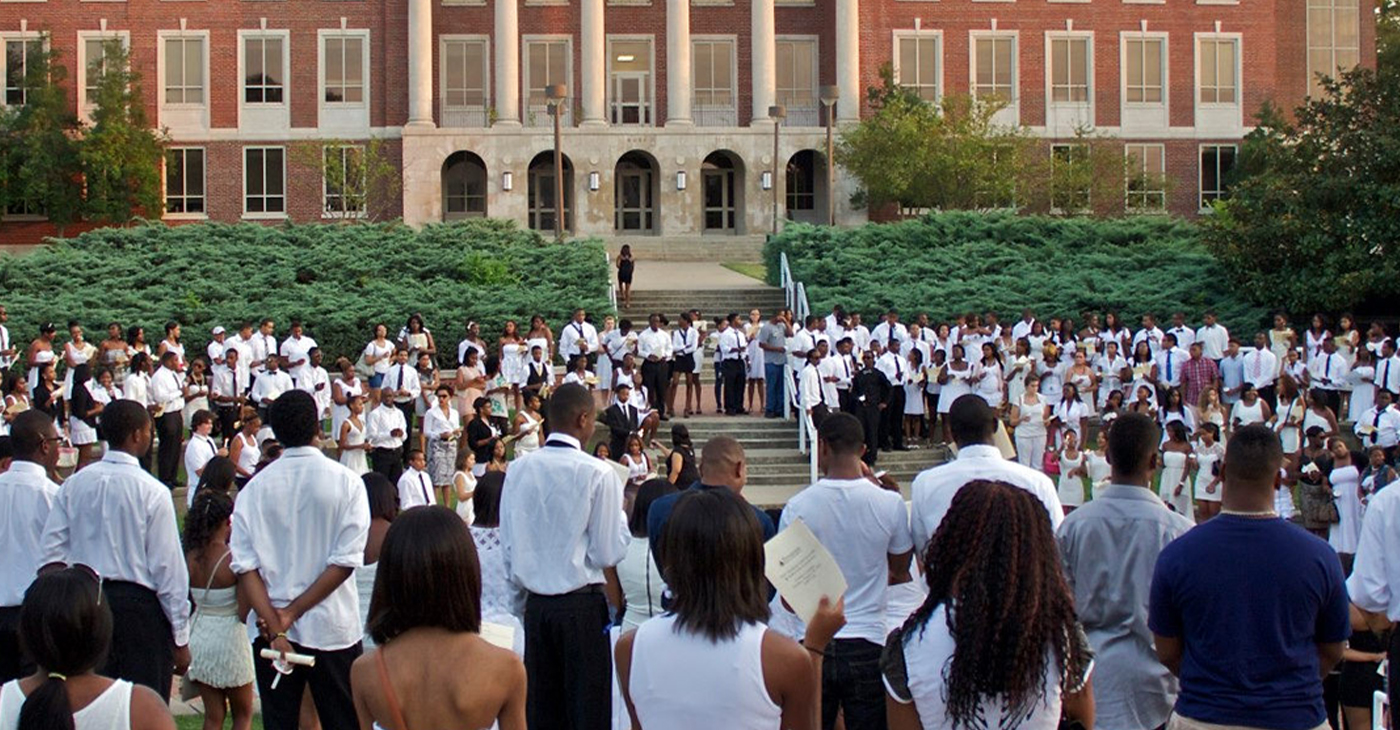
By Stacy M. Brown, NNPA Newswire Senior National Correspondent
@StacyBrownMedia
Tennessee State University (TSU), the state’s only public historically Black college and university (HBCU), faces a tumultuous future as Gov. Bill Lee dissolved its board, a move supported by racist conservatives and MAGA Republicans in the Tennessee General Assembly, who follow the lead of the twice-impeached, four-times indicted, alleged sexual predator former President Donald Trump. Educators and others have denounced the move as an attack on diversity, equity, and inclusion (DE&I) and a grave setback for higher education.
Critics argue that TSU’s purported financial mismanagement is a manufactured crisis rooted in decades of underinvestment by the state government. They’ve noted that it continues a trend by conservatives and the racist MAGA movement to eliminate opportunities for Blacks in education, corporate America, and the public sector.
Gevin Reynolds, a former speechwriter for Vice President Kamala Harris, emphasizes in an op-ed that TSU’s financial difficulties are not the result of university leadership because a recent audit found no evidence of fraud or malfeasance.
Reynolds noted that the disbanding of TSU’s board is not an isolated incident but part of a broader assault on DE&I initiatives nationwide. Ten states, including Tennessee, have enacted laws banning DE&I policies on college campuses, while governors appointing MAGA loyalists to university trustee positions further undermine efforts to promote inclusivity and equality.
Moreover, recent legislative actions in Tennessee, such as repealing police reform measures enacted after the killing of Tyre Nichols, underscore a troubling trend of undermining local control and perpetuating racist agendas. The new law preventing local governments from restricting police officers’ authority disregards community efforts to address systemic issues of police violence and racial profiling.
The actions echo historical efforts to suppress Black progress, reminiscent of the violent backlash against gains made during the Reconstruction era. President Joe Biden warned during an appearance in New York last month that Trump desires to bring the nation back to the 18th and 19th centuries – in other words, to see, among other things, African Americans back in the chains of slavery, women subservient to men without any say over their bodies, and all voting rights restricted to white men.
The parallels are stark, with white supremacist ideologies used to justify attacks on Black institutions and disenfranchise marginalized communities, Reynolds argued.
In response to these challenges, advocates stress the urgency of collective action to defend democracy and combat systemic racism. Understanding that attacks on institutions like TSU are symptomatic of broader threats to democratic norms, they call for increased civic engagement and voting at all levels of government.
The actions of people dedicated to upholding the principles of inclusivity, equity, and justice for all will determine the outcome of the ongoing fight for democracy, Reynolds noted. “We are in a war for our democracy, one whose outcome will be determined by every line on every ballot at every precinct,” he stated.
The post Tennessee State University Board Disbanded by MAGA Loyalists as Assault on DE&I Continues first appeared on BlackPressUSA.
#NNPA BlackPress
Braxton Haulcy and the Expansion of Walker|West Music Academy
May 24, 2023 – Walker West Music Academy gets an early start on expansion. Join us for a Wednesday episode of The …
The post Braxton Haulcy and the Expansion of Walker|West Music Academy first appeared on BlackPressUSA.
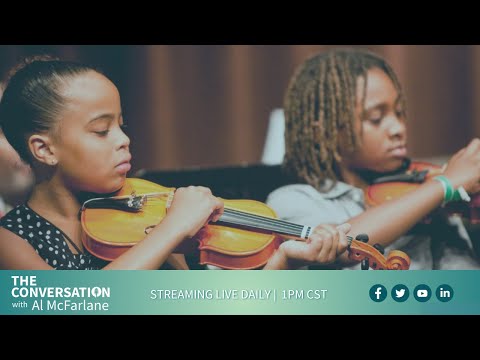
May 24, 2023 – Walker West Music Academy gets an early start on expansion. Join us for a Wednesday episode of The …
The post Braxton Haulcy and the Expansion of Walker|West Music Academy first appeared on BlackPressUSA.
-

 Activism4 weeks ago
Activism4 weeks agoOakland Post: Week of March 27 – April 2, 2024
-

 #NNPA BlackPress4 weeks ago
#NNPA BlackPress4 weeks agoBeloved Actor and Activist Louis Cameron Gossett Jr. Dies at 87
-

 Community1 week ago
Community1 week agoFinancial Assistance Bill for Descendants of Enslaved Persons to Help Them Purchase, Own, or Maintain a Home
-

 Activism3 weeks ago
Activism3 weeks agoOakland Post: Week of April 3 – 6, 2024
-

 Business1 week ago
Business1 week agoV.P. Kamala Harris: Americans With Criminal Records Will Soon Be Eligible for SBA Loans
-

 Activism2 weeks ago
Activism2 weeks agoOakland Post: Week of April 10 – 16, 2024
-

 Community1 week ago
Community1 week agoAG Bonta Says Oakland School Leaders Should Comply with State Laws to Avoid ‘Disparate Harm’ When Closing or Merging Schools
-

 Community6 days ago
Community6 days agoOakland WNBA Player to be Inducted Into Hall of Fame

